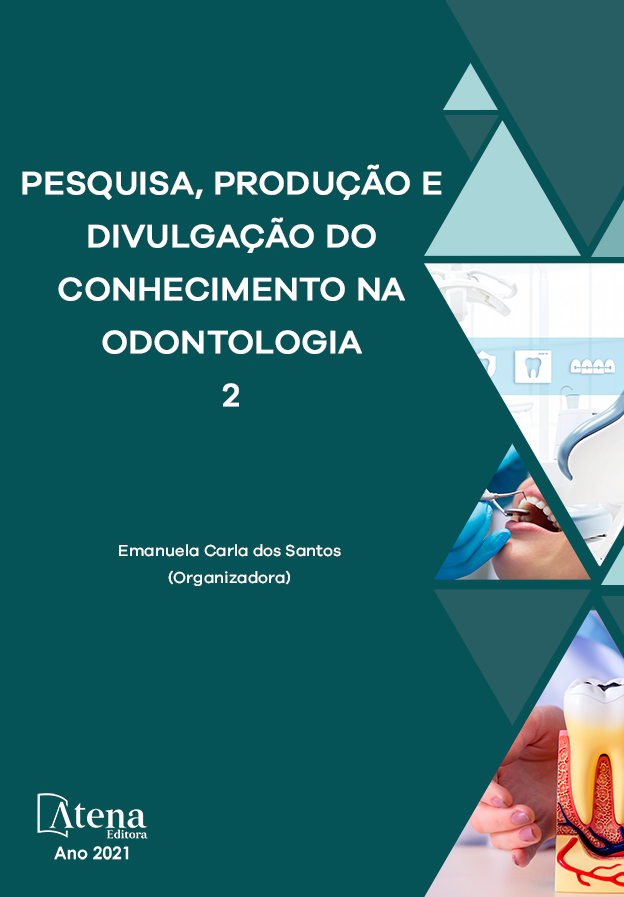
Incidência de perda precoce do primeiro molar permanente em escolares do ensino médio do município de Alta Floresta d' Oeste-RO
O primeiro molar permanente tem papel fundamental para o equilíbrio do sistema estomatognático e para a oclusão dos dentes permanentes. Sua perda precoce pode acarretar diversas desordens. Este artigo objetivou demonstrar qual a incidência de perda do primeiro molar permanente em adolescentes do ensino médio no município de Alta Floresta d’ Oeste no estado de Rondônia, através da avaliação oral e entrevista em jovens de 14 a 18 anos matriculados na rede pública do setor urbano. Trata-se de uma amostra de 159 alunos que aceitaram participar da pesquisa com autorização por escrito dos pais e/ou responsáveis quando o mesmo era menor de idade. A pesquisa foi realizada em três momentos, onde no primeiro momento foi realizada uma reunião com a instituição de ensino para agendamento de datas para a interação com os alunos, em um segundo momento foi realizado a entrega dos termos e consentimento livre e esclarecido e termo de assentimento de acordo com a idade dos alunos, onde todos foram convidados a participar da pesquisa, e no terceiro momento foi realizada a avaliação da cavidade oral naqueles que apresentaram os termos assinados e aceitaram participar da pesquisa. Assim dos 159 alunos, 137 (86,10%) não apresentaram perda do primeiro molar permanente, e 22 (13,9%) participantes estavam de acordo com os critérios de inclusão sendo, 17 (77%) do gênero feminino e 5 (23%) do gênero masculino. Destes o mais significativo foram os estudantes de 18 anos (36%) com perda de pelo menos um elemento em 55% dos casos, sendo os dentes 36 (28%) e 46 (33%) os mais frequentes. Conclui-se que a prevalência da perda precoce de primeiros molares permanentes foi elevada, o que demonstra que mesmo com todas as técnicas de prevenções já abordada na literatura, há uma necessidade de uma atuação educativo-preventiva mais efetiva.
Incidência de perda precoce do primeiro molar permanente em escolares do ensino médio do município de Alta Floresta d' Oeste-RO
-
DOI: 10.22533/at.ed.2912118014
-
Palavras-chave: Perda de dente. Molar. Incidência. Dentição transitória.
-
Keywords: Tooth loss; Molar; Incidence; Transient dentition.
-
Abstract:
The first permanent molar has a fundamental role in the balance of the stomatognathic system and in the occlusion of permanent teeth. Its loss, especially early, can lead to several disorders. This article aimed to demonstrate the incidence of loss of the permanent first molar in high school adolescents in the city of Alta Floresta D’Oeste on state of Rondônia, through oral evaluation and interview in young people aged 14 to 18 years enrolled in the public network of the urban sector in Alta Floresta D’Oeste. This is a sample of 159 students who agreed to participate in the research with written authorization from their parents and / or guardians when they were minors. The research was carried out in three moments, where in the first moment a meeting was held with the educational institution to schedule dates for interaction with students, in a second moment, the terms and free and informed consent were delivered and the term of consent according to the age of the students, where everyone was invited to participate in the research, in the third moment, the oral cavity was evaluated in those who presented the signed terms and accepted to participate in the research. Thus, of the 159 students, 137 (86.10%) did not present loss of the first permanent molar, and 22 (13.9%) participants met the inclusion criteria, 17 (77%) being female and 5 ( 23%) male. Of these the most significant were students aged 18 (36%) with loss of at least one element in 55% of cases, with teeth 36 (28%) and 46 (33%) being the most frequent. It is concluded that the prevalence of early loss of first permanent molars was high even though the students have already received hygiene instructions from some health professional, which demonstrates that even with all the prevention techniques already addressed in the literature, there is a need for a more effective educational-preventive action.
-
Número de páginas: 14
- Débora Gislene Folli Sepp
- Izabella Ribeiro Turci
- Kátia Cristina Salvi de Abreu Lopes


